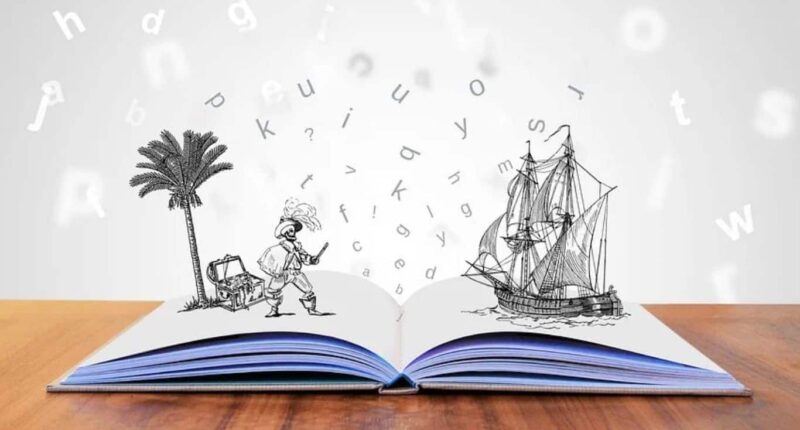Storytelling has been a fundamental tool for human communication and learning for thousands of years. It is the art of conveying a narrative through words, images, or other means of expression to create a shared understanding of experiences, emotions, and ideas. In recent years, research has shown that storytelling is an effective tool for learning, especially in educational and training settings. Effective learning is essential for personal growth, professional development, and societal progress. Therefore, understanding the science behind storytelling and learning, the benefits of using storytelling as a tool for effective learning, and how to use storytelling in learning can help educators and trainers design more engaging and memorable learning experiences. In this article, we will explore what makes storytelling an ultimate tool for effective learning?
What Makes Storytelling an Ultimate Tool for Effective Learning?
The science behind storytelling and learning

The human brain is wired for stories. When we hear a story, our brain releases dopamine, a chemical that helps us remember and feel pleasure. Stories activate multiple regions of the brain, including those responsible for language processing, sensory perception, and emotions. Research has shown that stories are more memorable than facts and figures because they engage more areas of the brain and create stronger neural connections. In fact, our brains are more likely to remember information when it is presented in a narrative format.
Furthermore, stories help us make sense of the world around us by providing a context for our experiences. They help us understand cause and effect relationships, and they can even shape our beliefs and values. Stories also foster empathy and emotional intelligence by allowing us to connect with the characters and their experiences. This emotional connection helps us to better understand and remember the information presented in the story.
Benefits of using storytelling as a tool for effective learning

Using storytelling as a tool for effective learning offers several benefits:
- Encourages critical thinking: Stories often present complex situations that require critical thinking and problem-solving skills. By analyzing the characters’ actions and decisions, learners can develop their critical thinking skills and apply them to real-world situations.
- Enhances understanding and retention of information: As mentioned earlier, stories engage more regions of the brain than facts and figures, making them more memorable. By presenting information in a narrative format, learners can better understand and retain the information.
- Fosters empathy and emotional intelligence: Stories provide a glimpse into the experiences and emotions of the characters, allowing learners to develop empathy and emotional intelligence. By connecting emotionally with the characters, learners can better understand different perspectives and cultures, leading to increased diversity and inclusion.
- Provides a framework for organizing information: Stories provide a natural structure for organizing information. By using a narrative arc, learners can better understand the relationship between different pieces of information and how they fit together.
Examples of storytelling in education and training

Storytelling has been used in a variety of educational settings, from elementary school classrooms to corporate training programs. Here are some examples of successful storytelling in education and training:
Case studies of successful storytelling in education: In one study, teachers used storytelling to teach science concepts to fourth-grade students. The results showed that students who received the storytelling intervention had better retention of the science concepts than those who received traditional instruction.
Storytelling in corporate training and development: Many companies use storytelling in their training programs to help employees develop skills such as leadership, communication, and problem-solving. For example, IBM uses a storytelling approach to teach its employees about its corporate values and history. Google also uses storytelling to teach its employees about the company’s culture and values.
How to use storytelling in learning

To effectively use storytelling in learning, consider the following:
Choosing the right story: Select stories that are relevant to the learning objective and audience. The story should be engaging, relatable, and memorable.
Incorporating storytelling into lesson plans and training programs: Integrate storytelling into the overall lesson plan or training program. Stories can be used to introduce a topic, reinforce key concepts, or provide examples of real-world applications.
Techniques for effective storytelling: Use a variety of storytelling techniques, such as using descriptive language, incorporating sensory details, and using humor or suspense to create engagement. Use visuals and multimedia to support the story and enhance the learning experience.
Challenges and limitations of using storytelling in learning

While storytelling can be an effective tool for learning, there are also challenges and limitations to consider:
Overuse and saturation of storytelling: While stories can be engaging and memorable, using them too frequently or inappropriately can lead to diminishing returns. Overuse of storytelling can lead to saturation and boredom, reducing their impact on learning.
Cultural and linguistic barriers: Stories may not always translate well across different cultures or languages. Some stories may be culturally specific or difficult to understand for non-native speakers. This can limit their effectiveness in reaching a diverse audience and can create barriers to understanding and engagement.
Conclusion
Storytelling is a powerful tool for effective learning, providing benefits such as improved critical thinking, enhanced retention of information, and the fostering of empathy and emotional intelligence. However, challenges and limitations such as overuse and cultural and linguistic barriers must also be considered. To use storytelling effectively, educators and trainers should choose the right story, incorporate it into lesson plans, and use effective storytelling techniques.
Looking ahead, future research could explore the use of technology in storytelling and its potential to enhance the learning experience. Additionally, continued exploration of the cultural and linguistic aspects of storytelling could help to overcome barriers and make it more accessible to diverse audiences. Overall, storytelling has significant potential to improve learning outcomes, and continued research and innovation can further advance its use in education and training.
Also Read: Why Smart People Read Books: The Link Between Reading and Intelligence



